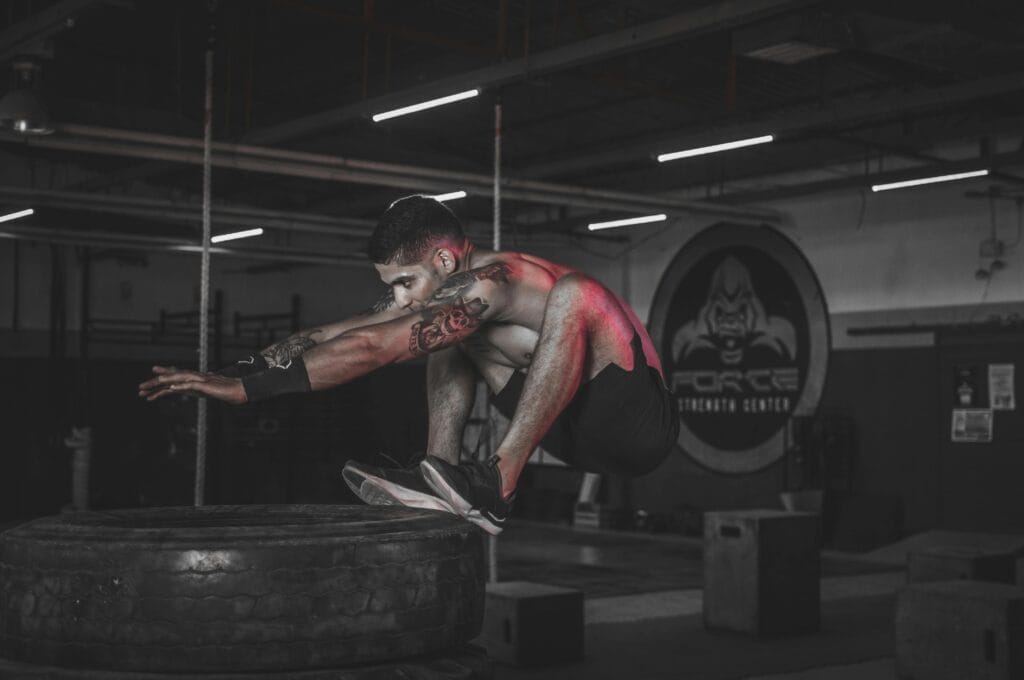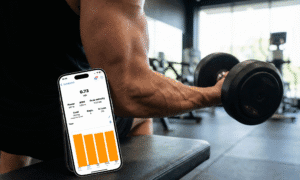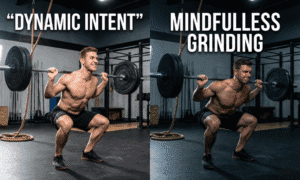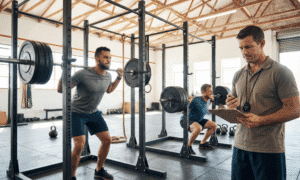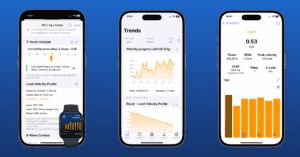Mastering the ability to understand how to jump higher is a vital skill across a wide range of sports, from volleyball and basketball to track and field. Jumping higher not only enhances athletic performance but also serves as a testament to your strength, power, and explosive capabilities. This detailed guide will walk you through science-backed techniques to improve your jump height, tips tailored for specific sports like volleyball and basketball, and how Spleeft App can be a game-changing tool for tracking and optimizing your progress.
DOWNLOAD SPLEEFT APP NOW FOR iOS, ANDROID AND APPLE WATCH!
How to Jump Higher
The Science Behind Jumping Higher

Jumping high involves a combination of strength, velocity, coordination, and technical precision. Here’s a closer look at the key components:
1. Strength and Power
Your muscles generate the force required to push off the ground. Strength training exercises, such as squats and deadlifts, enhance the primary movers—quads, glutes, hamstrings, and calves.
2. Velocity and Explosiveness
The cycle of stretch-shortening (SSC) allows your muscles to store elastic energy during the downward phase and release it explosively in the upward motion. Plyometric exercises, such as box jumps, are essential for improving this aspect.
3. Mobility and Flexibility
A greater range of motion (ROM) in your hips, ankles, and knees enables deeper squats and smoother energy transfer, critical for maximizing jump height.
4. Technique
The right mechanics ensure efficient energy use. Poor form can waste power and limit your vertical potential.
How to Jump Higher: General Tips for All Athletes
Learning to jump higher requires a structured approach that combines training, measurement, and adjustment. Here are universal tips applicable to anyone aiming to improve their vertical:
1. Master the Fundamentals of Jumping
Proper form maximizes efficiency and reduces the risk of injury. Follow these steps:
- Start Strong: Position your feet shoulder-width apart with your core engaged.
- Descend Quickly: Lower your hips to a squat position, ensuring your knees track over your toes.
- Explode Upward: Drive through your heels, extend your legs fully, and use an arm swing to generate momentum.
- Land Safely: Absorb the impact with bent knees and a neutral spine.
How Spleeft Helps:
Spleeft App analyzes jump mechanics using real-time data from your phone or Apple Watch. It provides insights into your takeoff velocity, height, and flight time, helping you refine your form and measure improvements.
2. Build Lower-Body Strength
Strength is the foundation of any jump. Target the key muscle groups with these exercises:
- Squats: Focus on both bodyweight and weighted squats.
- Deadlifts: Strengthen your posterior chain.
- Step-Ups and Lunges: Improve unilateral strength.
How Spleeft Helps:
Use Spleeft to monitor your velocity during resistance training. The app tracks how quickly you move weights, allowing you to optimize training for strength and explosiveness.
3. Enhance Explosiveness with Plyometrics
Plyometric exercises train your muscles to contract quickly and forcefully, mimicking the explosive motion of jumping. Incorporate:
- Box Jumps: Land softly to protect your knees.
- Depth Jumps: Step off a box and jump immediately upon landing.
- Broad Jumps: Focus on horizontal power.
How Spleeft Helps:
By measuring the velocity and height of each jump, Spleeft provides immediate feedback on performance, ensuring you’re pushing your limits.
4. Prioritize Core Stability
A strong core stabilizes your body during the jump, improving energy transfer. Add these to your routine:
- Planks: Build static core strength.
- Russian Twists: Enhance rotational stability.
- Hanging Leg Raises: Strengthen your lower core.
How Spleeft Helps:
The app tracks progress over time, helping you identify how improved core strength translates to better jumping metrics.
5. Leverage Post-Activation Potentiation (PAP)
PAP involves pairing heavy lifts with explosive movements. For example:
- Perform 3 heavy squats followed by 5 maximal-effort jumps.
How Spleeft Helps:
Spleeft monitors your fatigue levels and jump metrics to ensure PAP exercises are performed at optimal intensity and recovery times.
How to Jump Higher in Volleyball
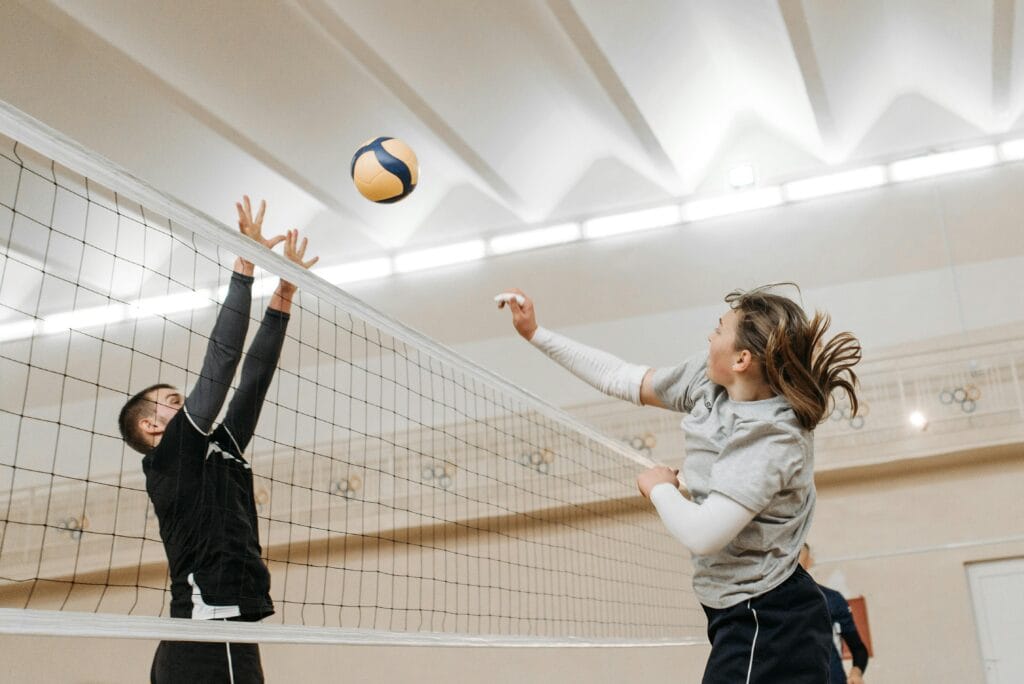
Why Jumping Matters in Volleyball
Jumping is a cornerstone of volleyball, critical for spiking, blocking, and serving. To jump higher in volleyball:
- Focus on Explosiveness: Use depth jumps and bounding drills.
- Train Single-Leg Power: Volleyball often requires asymmetrical jumping.
- Improve Arm Mechanics: Proper coordination between your arms and legs maximizes height.
How Spleeft Helps:
The app allows volleyball players to track jump trends during practice and games. Use it to measure improvements in spike and block heights over time.
How to Jump Higher in Basketball
Why Vertical Jump is Key in Basketball
A high vertical jump can elevate your game, from dunking to rebounding and shot-blocking. Here’s how basketball players can improve:
- Train for Power: Combine heavy squats with jump squats for maximum explosiveness.
- Simulate Game Scenarios: Practice dynamic movements like layups and fadeaways.
- Track Your Progress: Regular measurement ensures accountability and targeted improvements.
How Spleeft Helps:
Spleeft App tracks jump height in-game, providing instant feedback on your explosive power and helping you identify areas for improvement.
How High Do I Need to Jump to Dunk?
Dunking is one of the ultimate achievements in basketball. To determine how high you need to jump:
- Measure the rim’s height (typically 10 feet (ca. 3 m)).
- Subtract your standing reach. For example, if your standing reach is 8 feet (2.44 m), you need a 24-inch vertical jump to dunk.
How Spleeft Helps:
With Spleeft, you can measure your jump height and progress over time. The app provides actionable feedback, allowing you to adjust your training for the specific goal of dunking.
How to Jump Higher with Mountaintop Training
Mountaintop training involves reaching your peak athletic potential through:
- Combining heavy strength training with explosive plyometrics.
- Progressive overload to continuously challenge your muscles.
- Regular measurement to track progress and adjust intensity.
How Spleeft Helps:
Spleeft’s trend analysis and velocity-based tracking ensure that every session brings you closer to your athletic peak.
Leveraging Spleeft App for Jump Training
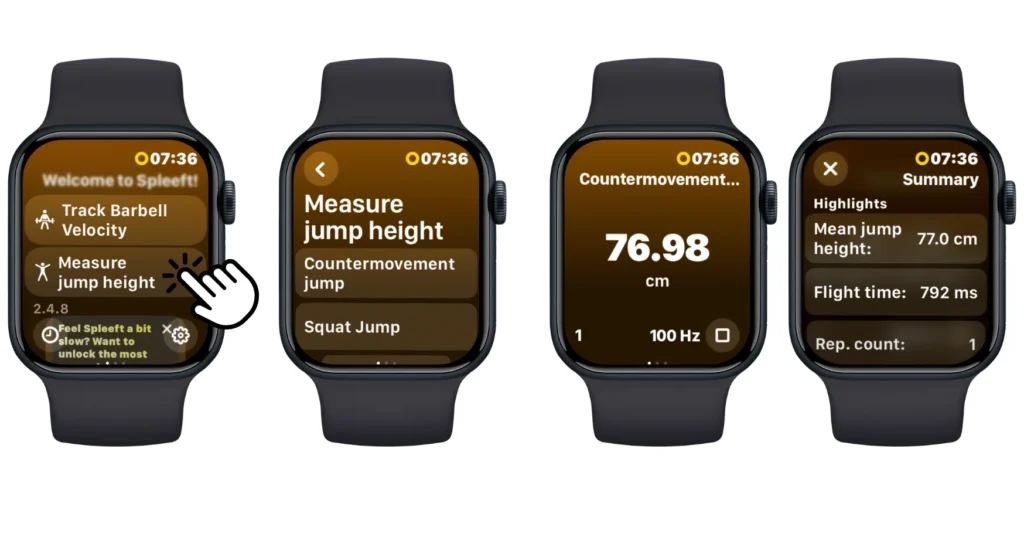
What Makes Spleeft Unique?
Spleeft is more than an app—it’s a training companion. Here’s what it offers:
- Real-Time Data: Track jump height, velocity, and takeoff mechanics instantly.
- Progress Monitoring: Review historical data to evaluate trends.
- Fatigue Assessment: Use jump metrics to assess neuromuscular fatigue and recovery.
- Custom Recommendations: Spleeft adapts training advice based on your performance.
How Spleeft Can Revolutionize Your Jump Training
Whether you’re training for volleyball, basketball, or general athleticism, Spleeft provides the insights needed to make informed decisions. Its analytics help you:
- Optimize training loads for strength and explosiveness.
- Identify weaknesses in technique.
- Maintain consistent progress with actionable data.
Conclusion
Improving your vertical jump is a science and an art. By combining strength training, plyometrics, and smart tools like Spleeft App, you can maximize your potential. Whether you’re aiming to spike higher in volleyball, dunk in basketball, or improve your overall athleticism, this guide gives you the roadmap to success.
With Spleeft, you’re not just jumping—you’re elevating your performance, tracking every step of your journey, and achieving goals you once thought were out of reach. Download the app today and start measuring your progress toward a higher jump.

